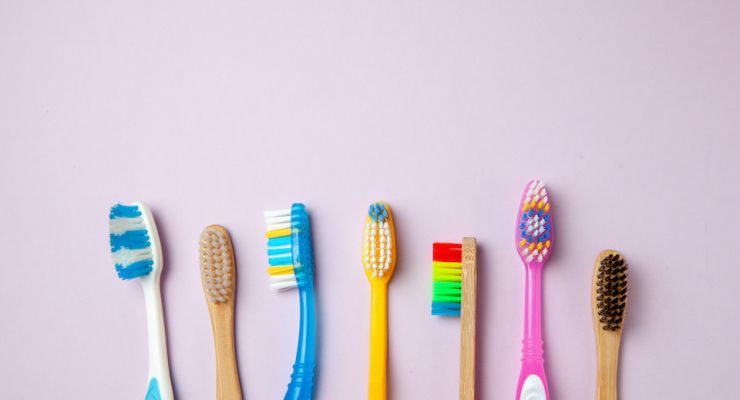We wash ourselves, our clothes, and our dishes until they are squeaky clean. But we rarely stop to give a second thought to the equipment we use to clean these things. Our showers, washing machines, dishwashers, and sponges are some of the filthiest areas of our homes – and our toothbrushes are no exception.
Since we use our toothbrushes to clean our teeth every day, most of us assume that they’re clean – but the truth is, there are a lot of unpleasant things lurking deep down in between the bristles. A plethora of bacteria, germs, fungi, and viruses can live quite happily in your toothbrush for months. In fact, scientists have found more than 10 million bacteria living on a single toothbrush.
This ‘bacteria farm’ – while invisible – can do some genuine damage. These microorganisms can compromise your oral health and can lead to other health problems in your body. Here are a few of the nasty bugs that may be lurking on your toothbrush.
Streptococcus
The oral cavity (and toothbrush) can be home to many different species of streptococci:
- Streptococcus mutans attack tooth enamel, leading to tooth decay and cavities. This same bacteria also causes MRSA infections and flesh-eating disease.
- Beta-hemolytic streptococcus, which causes strep throat. A bacterial infection, like strep throat, can live on your toothbrush long enough to reinfect you after your antibiotics are done.
- Streptococcus sanguis, which is a component of dental plaque.
And many more – some of which are helpful and others that are harmful.
Porphyromonas gingivalis
Commonly known as Pg, Porphyromonas gingivalis is the key species responsible for chronic gum disease. However, it can also enter the bloodstream, where it wreaks havoc on your system. Depending on where in the body it decides to go, this bacteria has been linked to several severe health issues, including Alzheimer’s disease, pneumonia, rheumatoid arthritis, heart disease, hepatitis, and esophageal cancer.
Herpes simplex virus, and other viruses
Viruses such as herpes can be spread with toothbrush use. This is the same virus responsible for oral and genital herpes. Another virus that can spread with toothbrush sharing is HPV (human papillomavirus), which has been linked to esophageal, oral, and cervical cancers. Both Hepatitis B and C can also be transmitted via toothbrush, and it’s also possible to transmit the Epstein-Barr virus (the one that causes mononucleosis) if saliva remains on the brush.
Fungi
Fungi, such as candida, which causes diaper rash and yeast infections, can happily thrive in the moist environment of a toothbrush. This could cause a fungal infection like thrush, also known as oral candidiasis. If you experience this problem, change your toothbrush frequently while being treated, and then break open a new one when your treatment is done.
Toilet bacteria
Have you ever wondered whether your toothbrush is being contaminated from the toilet? Every time you flush, bacteria become airborne and can travel up to five feet away. To keep these bacteria and other nasty toilet germs away from your toothbrush, store your toothbrush as far from the toilet as possible, and always close the lid before you flush.
Influenza virus
The influenza virus is another nasty bug that can call your toothbrush home. One study found that improved oral hygiene practices prevented the spread of influenza amongst older people. A toothbrush holder with individual slots is a good way to keep brush heads separated to help keep your family healthy. Cross-contamination is also an important reason not to share a toothbrush with anyone else.
How NOT to clean your toothbrush
There’s a lot of advice out there that recommends putting your toothbrush in the dishwasher, boiling it in water, or using a UV sanitizing light – but some of these methods can potentially damage the bristles or handle of your toothbrush. Damaged plastic can harbor more bacteria, and could lead to the ingestion of unwanted plastic.
Keeping your toothbrush clean to stay healthy
There are all sorts of techniques for cleaning your toothbrush, like soaking it in hydrogen peroxide, diluted bleach, or mouthwash. Research shows that soaking your toothbrush in the disinfectant chlorhexidine was highly effective in decreasing bacterial contamination, and was more effective than mouthwash. For a more holistic approach, try applying a drop or two of antibacterial essential oils, such as mint or cinnamon. However, the best way to prevent the spread of bacteria is to replace your toothbrush regularly.
How you store your toothbrush is probably the most important factor in keeping it free of pathogens. Warm, moist environments help germs thrive – so store your toothbrush upright and separate from any other items so that it can dry fully between uses. Those who believe they are keeping their toothbrush cleaner by using a cover are unfortunately creating a more bacteria-friendly environment – so these are best avoided.
Other tips to keep your toothbrush safe and clean:
- Never share a toothbrush with anyone else
- Always close the lid of the toilet before flushing to ensure bacteria don’t make it onto your toothbrush
- Clean electric toothbrushes well – especially between the detachable head and handle – which can harbor mold
- Be sure to wash your toothbrush holder regularly, since these have been found to be a germ-heavy area
With a little extra attention, you can ensure your toothbrush is free of harmful microbes and maintain good oral and overall health.
-Susan Patterson

